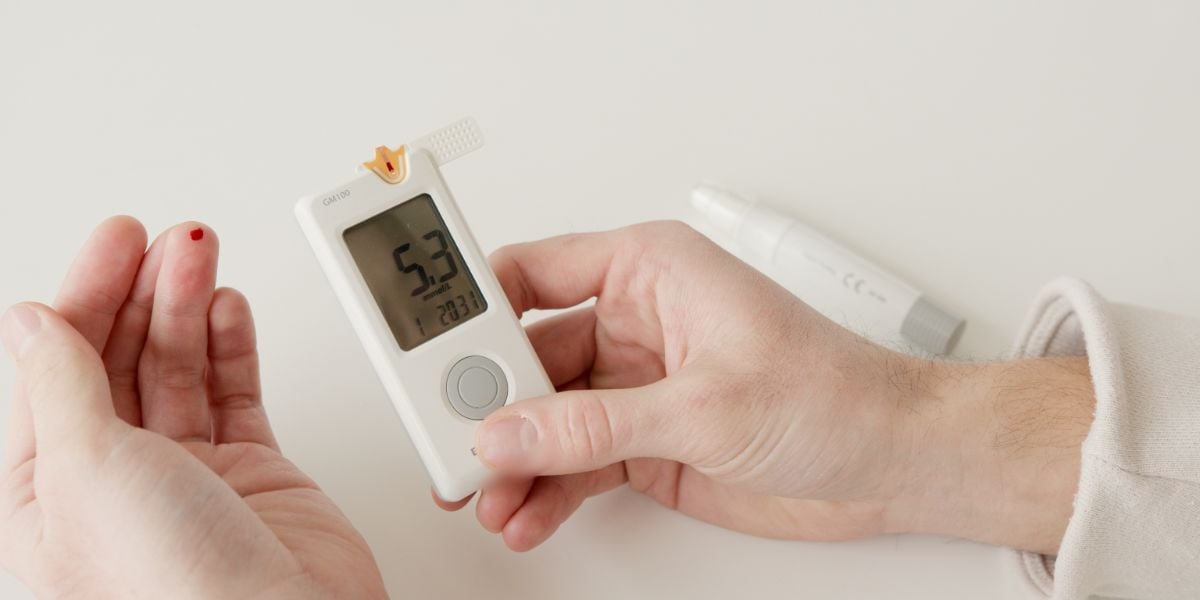With so many blood glucose meters available, we present an overview of what to look for in a blood glucose monitor to help you understand the range of features that modern blood glucose monitors offer.
Aspects to consider include how easy to use it is, how accurate it is, how much blood you need to draw for a test, what software and support is available and much more.
Blood sample size
Look out for the blood sample size needed to perform a test. This will give an idea of how much blood you may need from your finger to perform a test.
A sample size of 1 to 1.5 microlitres is considered to be quite small. The smaller the sample size, the less blood you need to score a result.
Size of meters
If you usually need to carry your meter around with you, you appreciate having a small and compact meter.
- See our guide on the Top 5 smallest blood glucose monitors
Meter accuracy
No glucose meter can confirm a 100% accurate reading. Most meters will display results with an accuracy of around 10% of the figure. If you are worried about accuracy, pick a meter which comes with control solution for calibration testing.
Whole blood glucose or plasma glucose
It may help to know whether the meter reads whole blood glucose or plasma glucose. Lab testing is done on plasma glucose, which is usually about 10-15% higher than a same measurement on whole blood glucose. Generally home glucose meters will measure whole blood glucose.
Some of these will report this figure whereas others may factor in a 10-15% increase to approximate the plasma glucose value.
Ease of use
Consider how easy to use the meter is. Unless your pharmacist or diabetes team can show you a few meters, it can be difficult sometimes to work out how easy a meter may be to use.
For this reason, we try to include video guides to help you decide how easy a meter is to use.
Look out for the video guides in our guide to blood glucose meters
Memory
Consider whether the meters memory size will be sufficient for you. If you test 5 times a day than a 100 test memory will give about 20 days of memory to play with.
Meter display
Would you prefer a meter that can display a number of readings from the memory, or prefer a meter that displays larger, easier to read figures one at a time?
Monitoring software
The meter’s software can be a key selling point as it can be handy to download your results onto a computer for printing or reviewing. Many meters have their own software to go with their meters allowing you to view averages, load charts and spot trends in your blood sugars similar to paper monitoring diaries
Time to produce a result
Many meters these days are able to produce results in less than 5 seconds of the blood sample being applied.
Appearance
Appearances are often quite a selling point for products. A nice appearance can help to make blood testing more bearable at times. For those that value discretion, some meters are deliberately styled to appear less like a glucose meter.
Cost of meter and strips
The cost of a meter may well influence your buying decision and if you don’t get your test strips on prescription, then the price of your strips may affect the decision further. If you’re not prescribed test strips, ask your pharmacy how much prices differ for different strips. Remember to compare costs for the same number of strips.
Coding and calibration
Some test strips are coded as different batches of test strips will differ in terms of the results they give. Coding technology is designed to help your meter provide the accuracy for the relevant batch.
Some meters will require you to calibrate the meter by entering the code of your strips before you use a new pot of strips. Whereas other meters may have built in technology to ensure no coding is needed, which can take some of the hassle away.
- See more on why some blood glucose meters are coded
All in one meters
For people who need to test on the go, there are all in one meters which combine a finger pricking device with the meter, rather than having the two as separate objects. Examples of all in one meters are the Accu-Chek Mobile and the Mendor Discreet
Extra meter features
Some blood glucose meters may include a host of additional features such as backlit screens to help with carrying out blood glucose tests in the dark.
Some meters allow for alternate site testing which lets you use more than just your fingers to test, some allow you to add notes to your results, some display charts and averages of your recent figures and some meters even talk to help people with sight difficulties.
Other things to consider
Other aspects to consider are the meter’s battery life and which type of batteries it takes.
Most meter batteries will be commonly available but it can be worthwhile checking.
If you may to need to test at extreme temperatures or altitude, it can also pay to see whether the meter and strips can cope with this.
Meter support
The meter support provded can be easily overlooked.
If you need new batteries, will the manufacturer supply new ones? What if you lose your data cable or have a query about the meter’s accuracy? A dedicated support team on hand can be useful.
Meter warranty
Check whether the meter’s manufacturer provides a warranty for the meter, in case it should have any problems.




